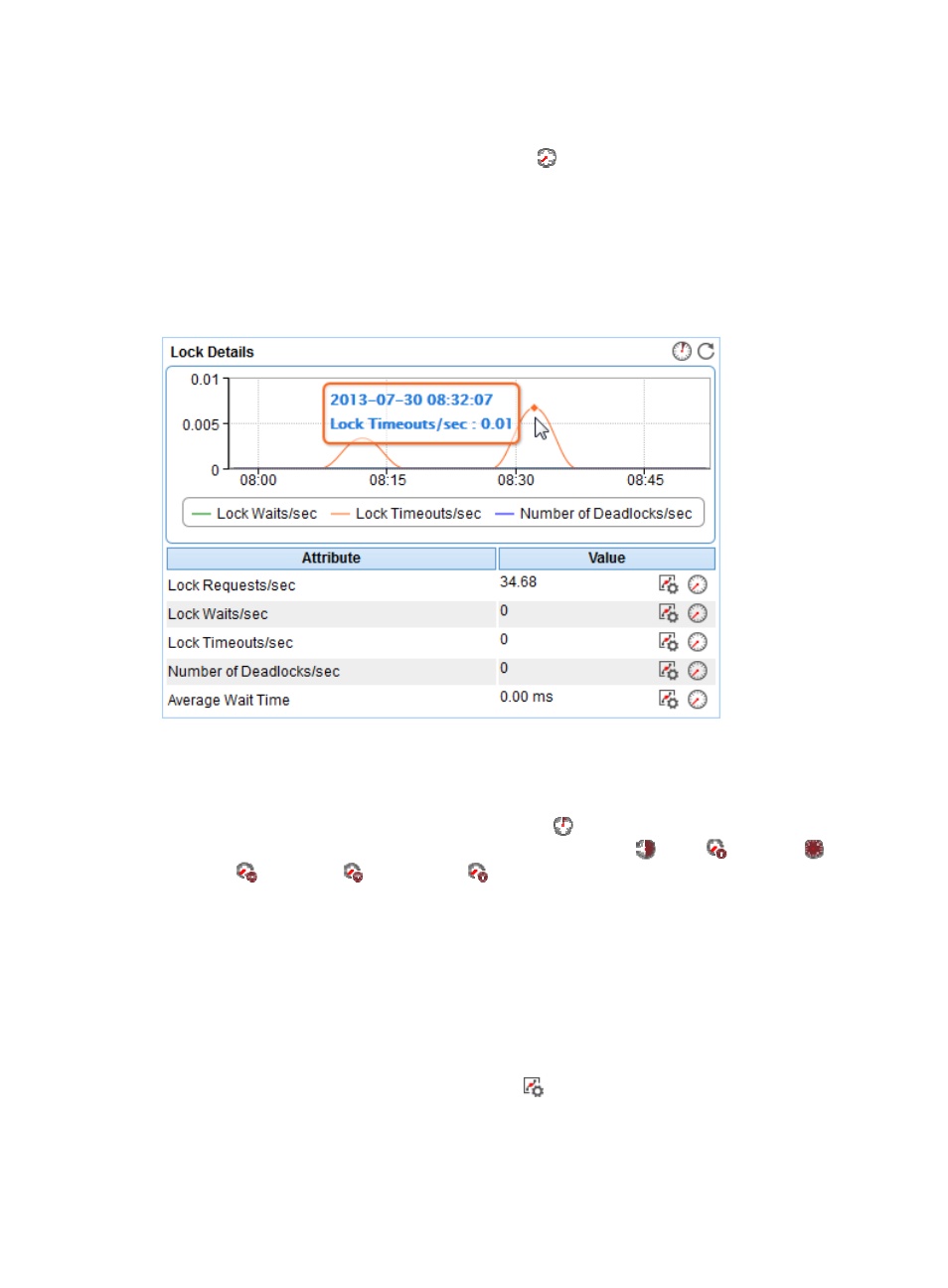Lock details – H3C Technologies H3C Intelligent Management Center User Manual
Page 252

." Higher cache hit ratio indicates better performance. Select Less
than or equal to for the Threshold Condition field.
{
History Record—Click the History Record icon
to view the history graph of the buffer details
trend. Point to a spot on the curve to view the buffer details at the specific time point. Authorized
users can view the buffer details over the last 1 hour, last 6 hours, today, yesterday, this week,
this month, and this year by clicking the corresponding icons on the upper right of the graph.
Lock Details
The Lock Details area layout is shown in
.
Figure 188 Lock Details area layout
Lock Details area fields:
•
Lock Statistics trend graph—Shows the lock changes of the SQL Server over the last 1 hour in a line
chart. Point to a spot on the curve to view the lock trend of SQL Server at the specific time point. To
change the report period, click the Last 1 Hour icon
on the upper right of the graph, and then
select an icon from the list. Available options include Last 6 Hours
, Today
, Yesterday
, This
Week
, This Month
, and This Year
.
•
Attribute/Value—Monitor index name and data that was obtained when APM last polled the SQL
Server.
{
Lock Requests/sec—Number of the received lock requests and the lock conversions per second.
{
Lock Waits/sec—Number of the waiting lock requests per second.
{
Lock Timeouts/sec—Number of the lock requests that timed out per second.
{
Number of Deadlocks/sec—Number of the lock requests that resulted in deadlocks per second.
{
Average Wait Time—Average waiting time for each lock request.
{
Set Threshold—Click the Set Threshold icon
to set alarm thresholds for lock statistics. The
specified alarm thresholds appear on the Lock Details trend graph as dotted lines. The data is
highlighted in orange when the deadlocks reach the level-1 threshold, and is highlighted in red
when the deadlocks reach the level-2 threshold. Use the global thresholds or custom thresholds.
For information about setting the thresholds, see "
